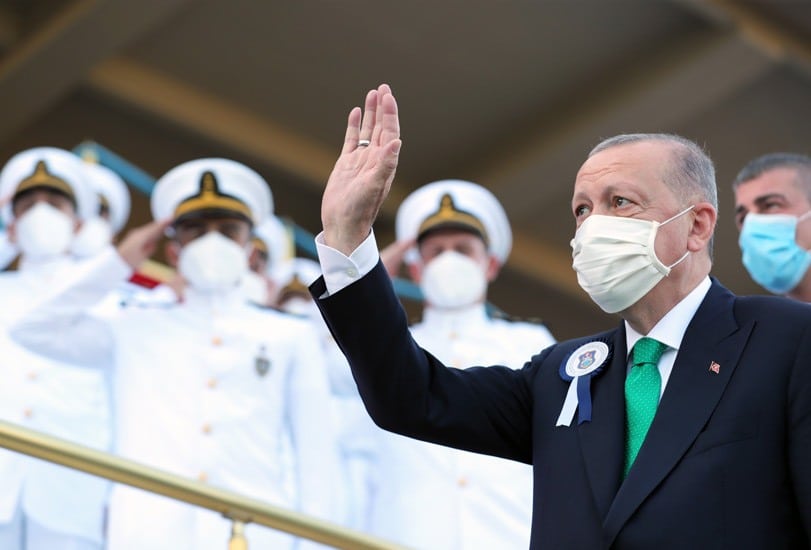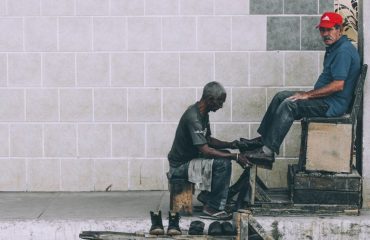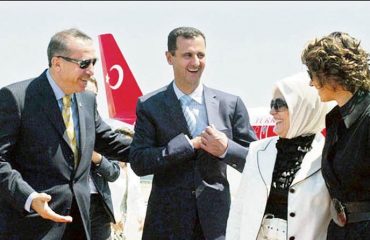

President Recep Tayyip Erdoğan of Turkey took a series of political-military steps last week, which had practical as well as symbolic significance. Taking the opportunity of the “Victory Week”, August 26-30 about the War of Independence of Turkey he gave a message to the exterior parties, especially the USA, the European Union, and Russia. The message was about Erdoğan’s policy of restructuring the Turkish Armed Forces. What Erdoğan said in his latest programs shows that he believes the Turkish army has reached the final stage of its restructuring plan.
Before taking a closer look at Erdoğan’s program for the past week, it is necessary to remember the turning points in recent history for restructuring the Turkish army. It was Sultan Mahmut the Second and Mustafa Kemal Atatürk who took the most radical reform efforts of the Turkish army in the last two centuries.
In 1826, it was Mahmut II who dissolved the centuries-old Janissary system which had become highly politicized, overthrowing and attempting to overthrow sultans and grand viziers; his surgical operation was quite a bloody one. It was Mahmut who adopted a Western-oriented military system to the Ottoman dynasty-ruled Turkish Empire and ironically named it as “Asâkir-i Mansure-i Muhammediye, the Victorious Soldiers of the (Prophet) Muhammad” to appease the madrasahs and the ulema class. The subsequent 1839 administrative (Tanzimat) and 1856 economic reforms would not have been possible without the restructuring of the military and the political authority over it; It was a regime change process.
Restructuring and regime change
One of the first radical reforms of Atatürk, after the declaration of the Republic in 1923 and abolishment of the Caliphate in 1924, was to establish a Joint Staff, besides the Ministry of Defense and removing the military officers from the Cabinet and the Parliament the same year. With the same move, Atatürk established the Director of Religious Affairs under the government and took it out of the political decision mechanisms as well. It was also a matter of regime change.
After the abolition of the Caliphate, it was clear that the Republican regime should not be based on the old soldier-ulema-madrasah triangle, even if madrasahs replaced madrasahs. Atatürk asked the soldiers to choose uniforms or politics. The corruption of the system began after Turkey’s joining to NATO in 1952 when the US-led Western defense considered Turkey as an “anti-communist border post” to Russia in the Soviet era; that meant ideological priorities replaced homeland defense.
Interestingly, years after he was overthrown by the May 27, 1960 coup, the overthrown president Celal Bayar said in an interview that the coup was a countermove by the military and the universities (like the old-time madrasahs) to claim back their places in politics, which had been banished by Atatürk.
It is noteworthy that the trigger factor in Erdoğan’s efforts to restructure the Turkish military was the coup attempt in 2016, almost a century from Atatürk’s and two centuries after Mahmut’s moves. It is necessary to name this fact before criticizing or appreciating it. However, it is possible to say that foreign policy and external factors played a bigger role than domestic politics in this latest move.
NATO and the US as external factors
Turkey’s relations with the United States have always been full of ups and downs. But on July 4, 2003, after the Turkish Parliament refused to participate in the Iraq war, the arrest of Turkish soldiers in Sulaymaniyah, Iraq by the American soldiers was shocking for Erdoğan as it was for the rest of Turkey. But the US establishment blamed the Turkish military, its brothers in arms in the NATO, rather than the AK Party government for the rejection of the motion in the Parliament.
The military statement on April 27, 2007, warning the government not to elect a new President with his view wearing a headscarf, which they considered as a violation of secular principles of the Republic, as the symbol of being a pious Muslim. It was a turning point when Erdoğan’s government publicly responded to the military to mind its own business. Erdoğan’s de facto partnership with the US-resident Islamist preacher Fethullah Gülen’s organization was strengthened and intertwined with this turning point. Highly politicized trials like Ergenekon and Balyoz (Sledgehammer) were operations to bring the Turkish army into line through the police and the judiciary, which were under the influence of Gülenists. The turning point here was the resignation of Chief of General Staff Işık Koşaner and three force commanders in July 2011. Erdoğan failed to read the essence of those resignations correctly.
Gülen had other plans
Erdoğan realized that Gülen’s plan was different only in 2012, with Gülenist prosecutors wanted to question Hakan Fiden, the head of Turkish National Intelligence Organization (MİT) as a collaborator of the outlawed Kurdistan Workers’ Party (PKK); he was under Erdoğan’s orders to probe a dialogue with the PKK in pursue of a political solution. Erdoğan thought it was the US establishment behind the move. His countermove in the same was launching a dialogue with the imprisoned PKK leader Abdullah Öcalan through Fidan, without any foreign intermediaries.
If the dialogue process had been successful, one of the aims would have been the establishment of a buffer zone by the PYD/YPG, the Syria branch of the PKK along the Syrian border with no hostility against Turkey following the break of the civil war in Syria. The ISIS, which was established in 2013 after Bashar Assad released the jailed al-Qaeda militants changed the entire outlook. The series of dramatic incidents like the December 2013 corruption investigations, the January 2014 scandal of MİT trucks carrying military equipment to Assad opponents in Syria, and the bugging of then Foreign Minister Ahmet Davutoğlu’s office in March 2014; Erdoğan suspected Gülenists and the US is behind all of them.
The relations between Erdoğan and Barack Obama quickly deteriorated during the October 2014 Kobani incident, when Erdoğan decided to help the ISIS-sieged Kurdish populated Syrian town only after Obama requested him to do so.
Gülenist conspiracy within the military
In the same period, Erdoğan began to hit hard at Gülenists and declared them as outlawed. After Washington cooperated with the PKK’s Syrian branch PYD/YPG against ISIS in 2015 despite warnings from Ankara, Erdoğan wanted to intervene militarily in Syria. Then Chief of the General Staff, Necdet Özel opposed it, by presenting a sickness report to avoid a decisive meeting. We can say that Erdoğan failed to read this development correctly, but to be honest, many commentators like me also failed to not read it correctly: It was not obvious that the Gülenists were so deeply organized within a major NATO power, the Turkish military. The roots of the conspiracy date back to the period of Turgut Özal, right after the military coup of September 12, 1980. The dimensions of the infiltration could be seen in the weeks and months following the coup attempt on 15 July 2016.
The first step in Erdoğan’s restructuring of the Turkish army was to close the military schools and academies, as they were seen as the places where the recruitments started.
The second step was the first military operation into Syria against both ISIS and the PKK launched only 5 weeks after the coup attempt. In the Turkişsh President’s eyes, this was mostly the message to the USA and the EU that “I am not down, I am standing, the army does what I say”.
It can be said that Erdoğan decided not to give the priority of the Turkish military strategy to NATO’s interests any longer but paying the dues to NATO at the same time.
Recent indications
Erdoğan started the week with the 950th-anniversary ceremonies of the Battle of Malazgirt (Manzikert), which was accepted as the official entry of Turks into Anatolia on 25-26 August 1071, when the Seljukian Sultan Alparslan defeated the Byzantian Emperor Diogenes. He decided there to pull back Turkish soldiers from Afghanistan there, after consulting with the Minister of National Defense, Hulusi Akar.
From there he went on a trip to Bosnia-Herzegovina and Montenegro, showing flags in the West Balkans. Turkey’s political presence in Syria, Libya, and Azerbaijan, which has increased recently, depends on its military power from “passive defense” to “active defense” and to “preventive” moves in nearby geographies.
The fact that Turkey used unmanned aerial vehicles and ammunition that it produced itself played a role in these moves. On his return, Erdoğan attended the delivery ceremony of the first of the “Akıncı – Raider” type top-class armed drone, to the military on 29 August. (Baykar, the manufacturer of Akıncı, is headed by an MIT engineer Selçuk Bayraktar -who proved his success before he became Erdoğan’s son-in-law.) On 31 August (established after 15 July), Erdoğan addressed the Navy and Air Force graduates of the National Defense University -established after 2016 to replace shut down military schools as follows: “We were in Azerbaijan with our Armed UAVs. We were in Libya with our AUAVs. From now on, we will not be beggars at anyone’s door again, because we have all of these [weapons].” What he was referring to was the United States, which had refused to sell UAVs to its NATO ally Turkey for years. (Now the American drones are in the hands of the Taliban in Afghanistan.)
Restructuring in a nutshell
A day before that Erdoğan spoke at the groundbreaking ceremony of Ay Yıldız (Crescent and Star) Campus on August 30, the Army Day. The General Staff and force commands will be taken from the neighborhood of the Turkish Parliament in central Ankara to be based in the Etimesgut suburb under the same roof of a huge Crescent and Star (as in the Turkish flag) shaped new Denefse Ministry headquarters; the media has already dubbed it as the Turkish Pentagon. This campus is the embodiment of the military restructuring in which the Chief of General Staff is subordinated directly to the President and the force commanders are attached to the MoD. It is compatible with the US system. The transition was achieved by the lateral transfer of Hulusi Akar from the Chief of General Staff to the Ministry of Defense and Yaşar Güler as the protocolar Chief of General Staff.
In the protocol of the 30 August reception ceremony held by Erdoğan on the same day, Ali Erbaş, the Director of the Religious Affairs (Diyanet) had a superior place than the Chief of Staff Güler, as a symbol of this transition. Also, at the graduation ceremony of the Turkish Military Academy held on the same day, Güler handed the diploma of the lieutenant Müberra Öztürk, the first women officer in the Turkish army wearing a headscarf. That was symbolic, too.
In his speech here, Erdoğan seemed to summarize that what he did after July 15, maybe thanks to it: “July 15 coup attempt, like every incident that Turkey has experienced recently, opened the door to many beneficial developments for our country and nation.” This includes concentrating all executive powers against the Assembly and the judiciary: the administrative regime has changed, if not the political one.
The summary of Erdoğan’s restructuring of the Turkish army is to make the army, the Religious Affairs, and a crippled academy being subject to the political system. But we cannot say to decision mechanisms, because in the Presidential Government System that he established thanks to the National Movement Party (MHP) leader Devlet Bahçeli, he is now the only political decision-maker.
The summary of the restructuring is to make the Turkish military autonomous from NATO to annex it directly into politics, and to bring it from the “passive defense” mode to the “active defense” mode as a concept.
It will inevitably have consequences for both Turkey and its region.


